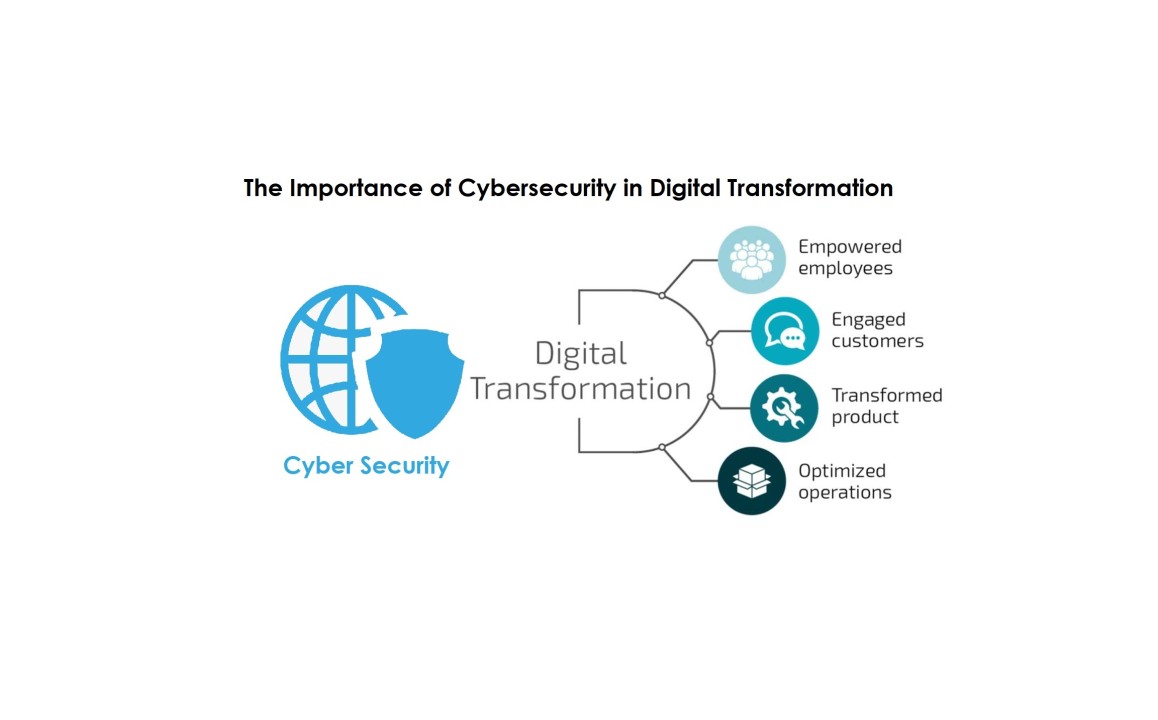Cybersecurity in Digital Transformation: Safeguarding the Future of Business
Digital transformation is reshaping businesses across the globe. From integrating artificial intelligence (AI) to leveraging cloud computing, organizations are adopting cutting-edge technologies to improve efficiency, customer experience, and profitability. However, as businesses evolve digitally, cybersecurity risks rise exponentially, threatening the very core of their operations.
In this article, we will delve deep into cybersecurity’s role in digital transformation, discuss the challenges faced by organizations, and explore strategies to build a resilient and secure digital infrastructure.
What is Digital Transformation?
Digital transformation involves integrating technology into every facet of an organization to fundamentally change how businesses operate and deliver value.
Key pillars of digital transformation include:
– Cloud adoption for scalable data storage.
– Big data analytics to derive actionable insights.
– Automation for streamlining workflows.
– Internet of Things (IoT) for connected operations.
– AI and machine learning for decision-making.
While these advancements drive innovation, they also expand the attack surface for cybercriminals.
Cybersecurity in the Era of Digital Transformation
With the rise of digital ecosystems, ensuring data integrity, confidentiality, and availability is no longer optional. Cybersecurity must be woven into the fabric of digital transformation strategies to protect sensitive data, prevent financial losses, and maintain brand reputation.
Why Cybersecurity is Critical
- Data Breaches: Businesses handle vast amounts of sensitive data. A single breach can cost millions and erode customer trust.
- Compliance: Laws like GDPR and CCPA demand stringent data protection. Non-compliance can result in hefty fines.
- Increased Attack Vectors: Technologies like IoT and remote work introduce new vulnerabilities.
- Trust: Customers demand that their data be secure when interacting with digital platforms.
Challenges in Securing Digital Transformation

- Complex IT Infrastructure
Digital transformation often involves hybrid systems—merging legacy systems with modern tools. This complexity increases the difficulty of maintaining consistent security protocols. -
Sophisticated Cyber Threats
Cyberattacks, such as ransomware and phishing, are becoming more sophisticated. For instance, zero-day vulnerabilities exploit software weaknesses before they are patched. -
Shortage of Cybersecurity Talent
According to research, the global shortage of cybersecurity professionals leaves organizations vulnerable. -
Budget Constraints
Many organizations prioritize technological upgrades over cybersecurity investments, leaving gaps in protection.
Strategies to Enhance Cybersecurity in Digital Transformation
1. Adopt a Zero-Trust Model
The zero-trust architecture operates on the principle of “never trust, always verify.” It ensures every user and device is authenticated before accessing sensitive data.
Benefits of Zero Trust:
– Reduces insider threats.
– Limits the impact of breached credentials.
– Provides granular access control.
Read more: What is Zero-Trust Architecture?
2. Invest in Cloud Security
Cloud adoption is at the core of digital transformation, but it also introduces risks. Secure your cloud environment by:
– Encrypting data both in transit and at rest.
– Implementing strong access controls.
– Conducting regular audits to detect vulnerabilities.
3. Employee Training
Human error is the leading cause of data breaches. Conduct regular cybersecurity training programs to educate employees about:
– Identifying phishing attempts.
– Creating strong passwords.
– Reporting suspicious activities.
4. Leverage AI for Threat Detection
AI-powered tools can detect anomalies and predict cyber threats in real-time. Machine learning algorithms continuously adapt to new attack patterns, providing proactive defense.
Example: SIEM (Security Information and Event Management) platforms use AI to monitor and analyze network activities.
5. Collaborate with Experts
Outsourcing to cybersecurity service providers can bolster your defenses. Companies like Palo Alto Networks and Fortinet offer robust solutions tailored to your industry.
Industries Most Affected by Cybersecurity Threats
1. Healthcare
The healthcare industry is a prime target due to its vast repositories of personal health information (PHI). Cyberattacks can disrupt services, risking lives.
2. Finance
Banks and fintech firms face threats like identity theft and fraudulent transactions, making cybersecurity a top priority.
3. Retail
E-commerce platforms must secure payment gateways and customer data to prevent theft and fraud.
Real-World Example: Maersk Cyberattack
The 2017 NotPetya ransomware attack on Maersk paralyzed operations, costing the company $300 million. The incident highlighted the importance of robust cybersecurity in protecting global supply chains.
Lesson: Regular backups and incident response plans are critical.
FAQs on Cybersecurity in Digital Transformation
Q1: What is the first step in securing digital transformation?
A: Start with a comprehensive risk assessment to identify vulnerabilities in your digital ecosystem.
Q2: How does digital transformation increase cybersecurity risks?
A: It expands the attack surface by introducing more connected devices, systems, and data points.
Q3: Is cybersecurity a one-time investment?
A: No, it requires continuous monitoring, updates, and improvements to counter evolving threats.
Conclusion
Cybersecurity is not an afterthought; it is a foundational element of digital transformation. As organizations strive to innovate and grow, ensuring robust cybersecurity measures is essential to protect data, maintain customer trust, and comply with regulations.
By prioritizing strategies such as zero-trust models, AI-driven threat detection, and employee training, businesses can navigate the digital landscape with confidence. Remember, a proactive approach today can save millions tomorrow.
Explore more: The Future of Cybersecurity in Business
Did you find this article helpful? Share it with your network to spread awareness about the importance of cybersecurity in the digital age.




